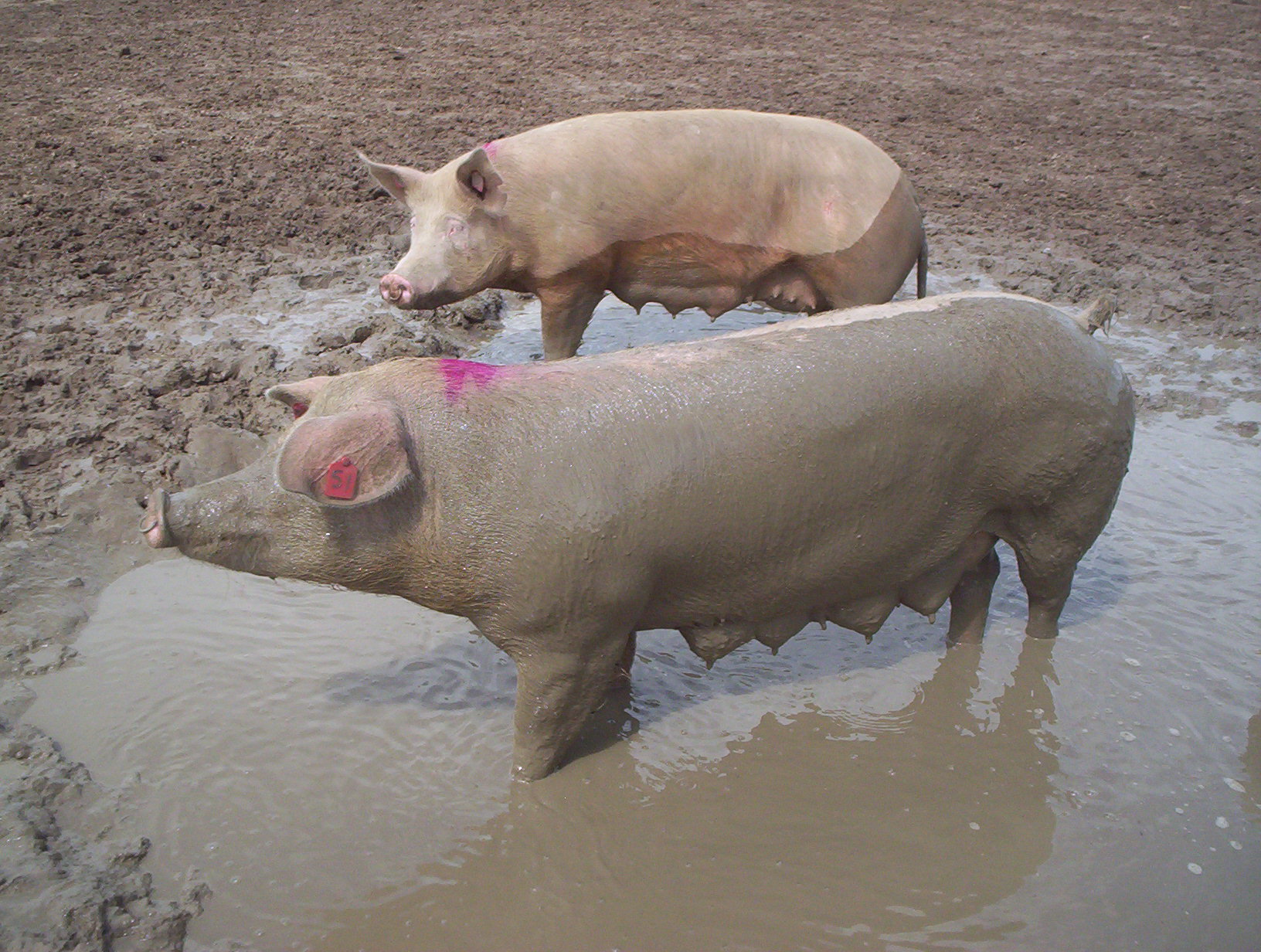- Home
- Knowledge library
- Avoiding heat stress in pigs: outdoor herds
Avoiding heat stress in pigs: outdoor herds
Pigs kept outdoors are particularly vulnerable to radiant heat gain, and it is important that they have access to shade in sunny weather. Here are some practical steps you can take to minimise heat stress.
Wallows
Wallowing and rooting in the cool earth are the two primary methods used by pigs to cool down, as heat is lost through the evaporation of water from the skin.
It is important that the wallows are muddy, as the layer of mud on the body can reduce sunburn.
For most of the year, wallows will require minimal management. However, during the warmer months, effective wallow management is crucial to ensure they do not dry up.
Wallow management
- Provide enough space for twice the number of pigs it is intended for as this will enable the more submissive animals to use the wallow
- Dig wallows early in the year to ensure you are prepared and consider hiring a digger to save time and effort
- Wallows should be more liquid than mud (the consistency should resemble emulsion paint)
- During periods of little or no rainfall, replenish water daily to prevent wallows from drying out
- Do not allow wallows to become stagnant as this can lead to infections
- Provide a separate supply of clean water for drinking, in addition to the wallow
Accommodation
It is essential that recently-farrowed sows are encouraged to lie in their arcs to ensure that piglets are able to suckle.
However, internal arc temperatures will always be higher than external temperatures due to the heat produced by the sow and piglets.
- Ensure arcs are well insulated
- Take advantage of the prevailing winds – position the arcs so they face into the wind
- Open back vents to improve ventilation
- Consider painting arcs white to reflect sunlight
- Draughts should be eliminated, as at ground level they can still cause problems
Shade
Sunburn is common in early summer (May/June), as pigs are exposed to the first strong sunlight since winter.
Severe sunburn, when the skin blisters, can cause pregnancy failure, and the pain and discomfort will lead to increased stress levels.
Although a layer of mud will reduce sunburn, it is essential to provide shade for the animals so they can move out of direct sunlight.
Breeding herds: sows
- Where possible, serve at either end of the day, when it will be cooler, and ensure that holding areas are shaded
- Maintain good hygiene, especially where sows have been wallowing, and ensure vulvas are clean pre-insemination
- Have handwashing facilities and/or gloves readily available
Breeding herds: boars
- Heat stress tends to reduce the libido of boars and can reduce the viability of semen for up to eight weeks post heat stress
- Note periods of hot weather on your calendar and remember to check semen quality for up to eight weeks after the last period of heat stress or ill health
- Boars will not work in hot conditions, and encouraging them to do so is likely to increase heat stress so carry out all DIY at either end of the day
AI and temperature control
Temperature control of AI doses is crucial, as they can overheat quickly and become unviable.
Ensure that doses are kept in an insulated container (16–18°C) until required for insemination and that they are shielded from direct sunlight.
Find out more about semen storage and handling
Useful links

Wallows should be more liquid than mud
Topics:
Sectors:
Tags:

